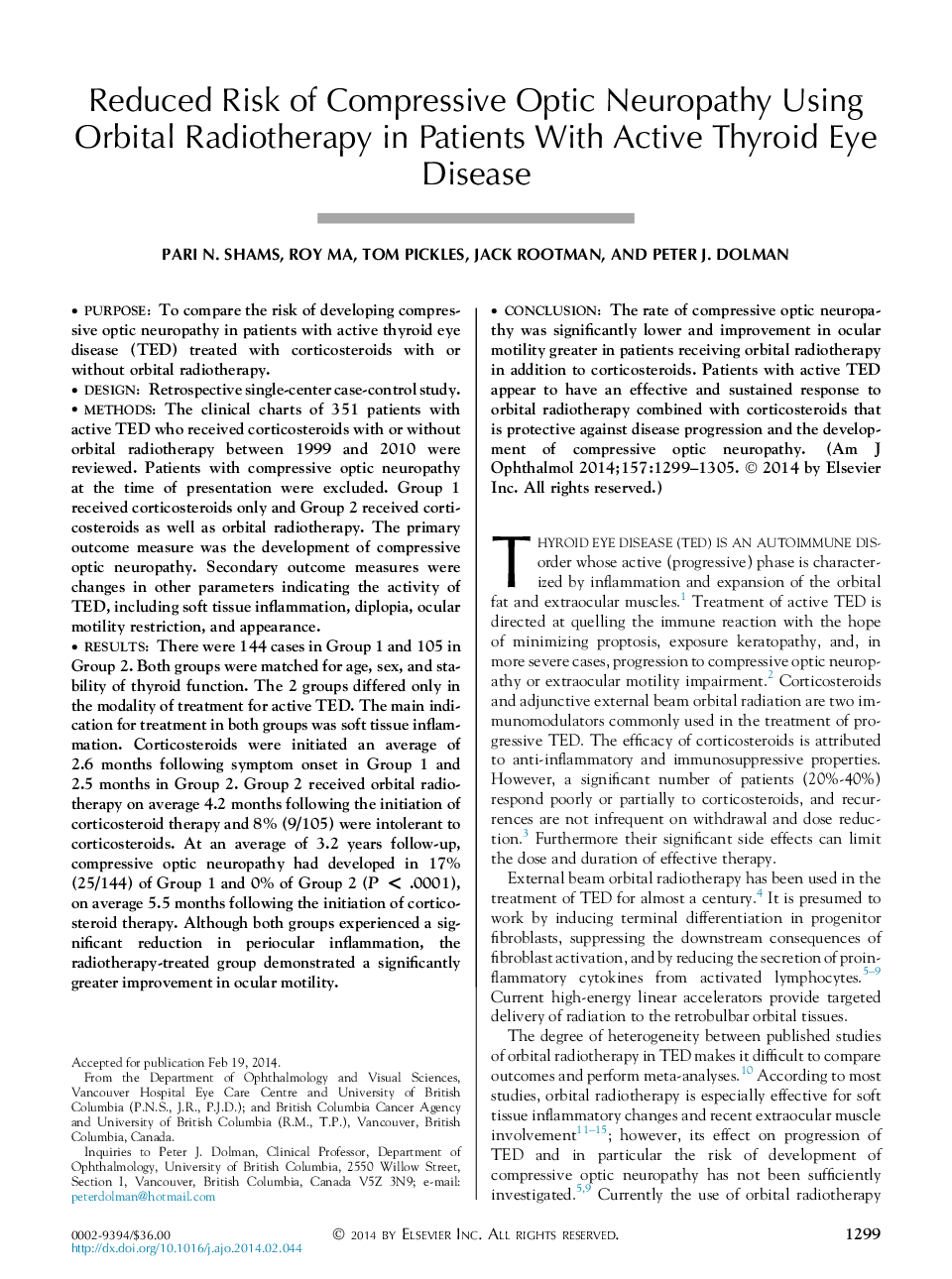| کد مقاله | کد نشریه | سال انتشار | مقاله انگلیسی | نسخه تمام متن |
|---|---|---|---|---|
| 4002175 | 1602135 | 2014 | 7 صفحه PDF | دانلود رایگان |
PurposeTo compare the risk of developing compressive optic neuropathy in patients with active thyroid eye disease (TED) treated with corticosteroids with or without orbital radiotherapy.DesignRetrospective single-center case-control study.MethodsThe clinical charts of 351 patients with active TED who received corticosteroids with or without orbital radiotherapy between 1999 and 2010 were reviewed. Patients with compressive optic neuropathy at the time of presentation were excluded. Group 1 received corticosteroids only and Group 2 received corticosteroids as well as orbital radiotherapy. The primary outcome measure was the development of compressive optic neuropathy. Secondary outcome measures were changes in other parameters indicating the activity of TED, including soft tissue inflammation, diplopia, ocular motility restriction, and appearance.ResultsThere were 144 cases in Group 1 and 105 in Group 2. Both groups were matched for age, sex, and stability of thyroid function. The 2 groups differed only in the modality of treatment for active TED. The main indication for treatment in both groups was soft tissue inflammation. Corticosteroids were initiated an average of 2.6 months following symptom onset in Group 1 and 2.5 months in Group 2. Group 2 received orbital radiotherapy on average 4.2 months following the initiation of corticosteroid therapy and 8% (9/105) were intolerant to corticosteroids. At an average of 3.2 years follow-up, compressive optic neuropathy had developed in 17% (25/144) of Group 1 and 0% of Group 2 (P < .0001), on average 5.5 months following the initiation of corticosteroid therapy. Although both groups experienced a significant reduction in periocular inflammation, the radiotherapy-treated group demonstrated a significantly greater improvement in ocular motility.ConclusionThe rate of compressive optic neuropathy was significantly lower and improvement in ocular motility greater in patients receiving orbital radiotherapy in addition to corticosteroids. Patients with active TED appear to have an effective and sustained response to orbital radiotherapy combined with corticosteroids that is protective against disease progression and the development of compressive optic neuropathy.
Journal: American Journal of Ophthalmology - Volume 157, Issue 6, June 2014, Pages 1299–1305
